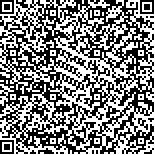| This article has been:Browse 2198Times Download 2926Times |

scan it! |
|
|
| DOI:10.13522/j.cnki.ggps.2016.0006 |
|
| Remote Sensing Inversion of Groundwater Level in the Yellow River Delta during Plants Thrive |
|
YIN Tao, WANG Ruiyan, DU Wenpeng, WANG Jingwei, REN Tao, CAO Guangshan
|
|
College of Resources and Environment, Shandong Agricultural University, Tai’an 271018, China;2.Rizhao Municipal Land and Resources Bureau, Rizhao 276800, China; 3. Tai’an Agricultral Bureau,Tai’an 271018, China; 4. Zhanhua District Land and Resources Bureau of Binzhou Municipal, Binzhou 256800, China
|
| Abstract: |
| 【Objective】 Obtain the groundwater level of the Yellow River Delta rapidly and accurately. 【Method】The groundwater level data of the 18 sites in 2004 (July to September) and the method of univariate and multivariate linear regression were used to select the inversion indices, then the two inversion models of remote sensing indices inversion and geoscience and remote sensing indices inversion were compared. 【Result】The logarithmic transformed NDVI, exponential transformed LST at night and the exponential transformed TVDI at night were the sensitive remote sensing indices for the inversion of groundwater level. The distance from the Yellow River (H1), the water density around the observation site (H2) and DEM were the sensitive geographical indices for the inversion of groundwater level. The determination coefficient of the groundwater level prediction model was increased from 0.496 to 0.791 when the geographical indices were introduced. The data from other years showed that the method of combination the remote sensing with the geo-referenced indices could accurately predict the distribution of groundwater depth in the study area during the vegetative growth period.【Conclusion】The combination of remote sensing index and geoscience index is more reasonable. |
| Key words: Yellow River Delta; groundwater level; model |
|
|